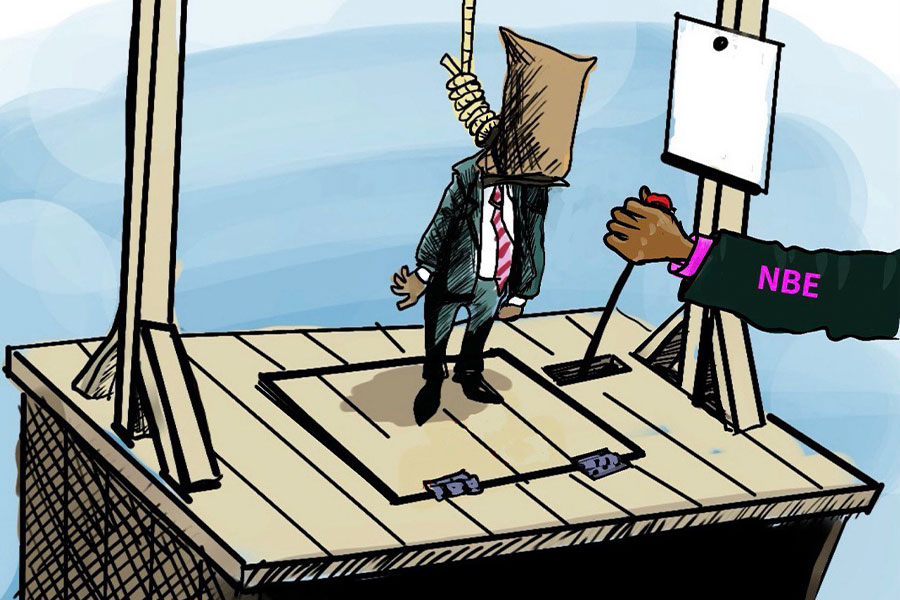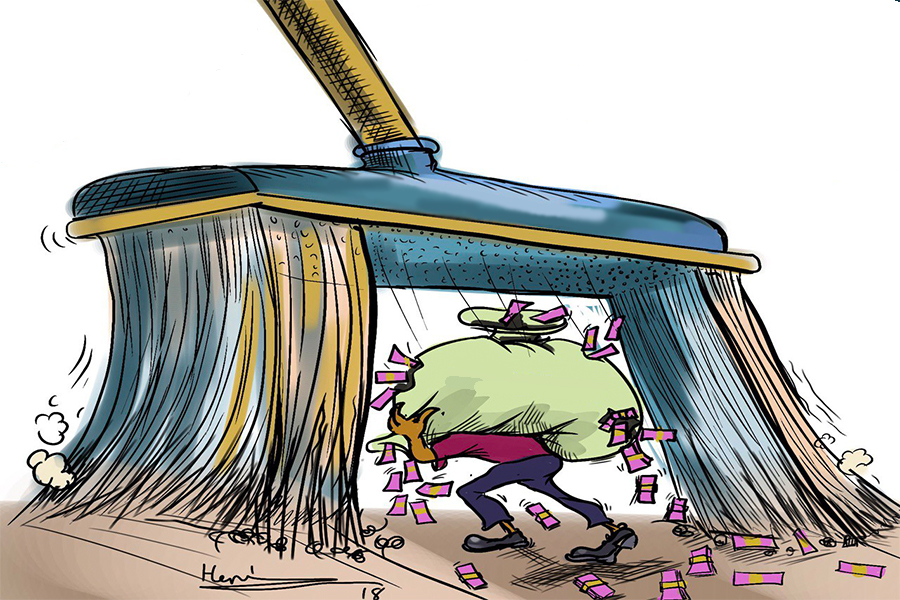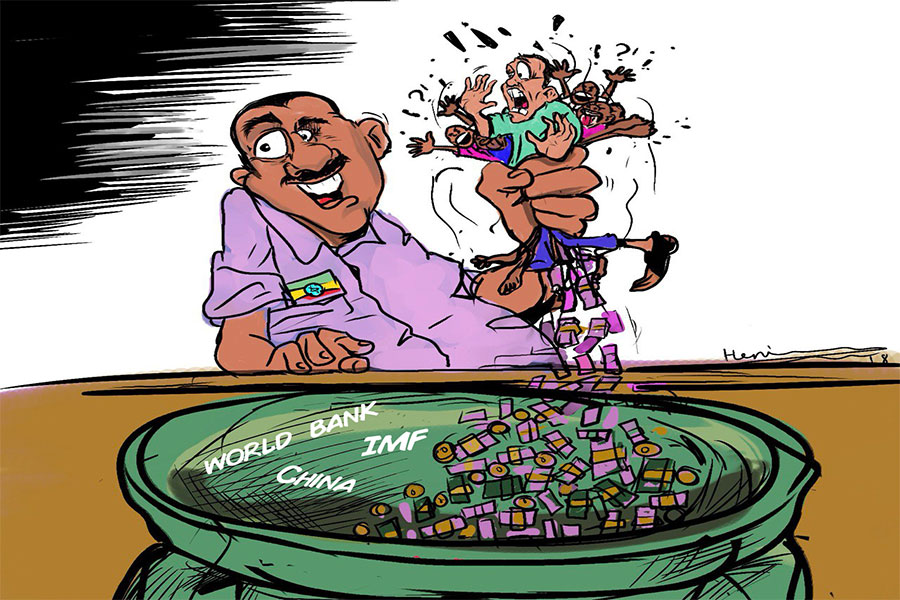
Photo Gallery | 180387 Views | May 06,2019
Oct 11 , 2025. By Mekonnen Solomon ( Mekonnen Solomon (ehdaplan@gmail.com) is a horticulture export coordinator and senior staff of the Ministry of Agriculture. )
After years of industry debate, officials of the Ministry of Agriculture are rolling out a new minimum export price regime for cut flowers, taking effect October 13, 2025. The long-awaited move, enforced by the National Bank of Ethiopia (NBE), will push floor prices between 7.27pc and 15pc depending on altitude and variety, writes Mekonnen Solomon (ehdaplan@gmail.com), a horticulture export coordinator and senior staff of the Ministry of Agriculture.
A long-overdue update to the floriculture export regime is taking effect, but it arrives with a double edge. After protracted consultations with growers, officials of the Ministry of Agriculture have formulated new minimum export prices for cut flowers, to be enforced by the National Bank of Ethiopia (NBE) beginning October 13, 2025.
It marks the first across-the-board increase in years, offering a moderate revenue bump but also testing the credibility of an enforcement system riddled with opacity and trust deficits. The floor price hikes, ranging from 7.27pc to over 15pc depending on altitude and variety, will affect nearly all exporters. Lowland roses, coming particularly from the busy Ziway horticultural export cluster, which now accounts for 40pc of volume, see the highest gain at 11.41pc. Highland summer flowers will fetch 5.26 dollars a kilogram, a 10pc rise.
On paper, these adjustments could generate an additional 60 million to 70 million dollars annually, a deliberate measure in a foreign currency-starved economy. But the fine print reveals deeper fault lines.
Unlike static reference rates, the updated floors are tied to self-declared and real-time data from exporters through commercial banks. If the declared price meets or exceeds the floor, the forex flows. If not, the bank will not give a fresh export permit) Theoretically, the system is designed to curb under-invoicing and safeguard repatriated earnings. In practice, the process often amounts to rubber-stamping invoices that meet the floor, with little scrutiny of whether the numbers reflect fair market value, or subtle offshore discounting.
This system depends on a basic level of trust between regulatory institutions and exporters, a relationship that empowers and restrains the sector. According to the Central Bank’s directive, this trust is counterbalanced by clear requirements. Exporters should sell their blossom at prevailing market prices and repatriate all foreign currency earnings in full. Issued in 2006, the directive makes the Central Bank responsible for ensuring compliance through a thorough ex post price verification process. This mechanism provides transparency and accuracy in reporting the actual selling prices achieved in foreign markets, thereby building trust among all stakeholders, from governments and exporters to buyers.
Currently, the ex-post price verification process overseen by the Central Bank primarily focuses on monitoring compliance with the government’s minimum price policy. However, the scope of these checks extends further. It also includes reviewing actual selling prices over time, detecting any instances of price discrimination, such as exporters offering different prices to different buyers for the same flower varieties, and looking into barriers to entry or unfair pricing practices that could undermine competitiveness in international markets.
While this system is built on a foundation of trust and regulatory oversight, it is not without its challenges. One of the biggest hurdles regulators face is the lack of direct access to timely and reliable market intelligence. Supermarkets, retailers, and global flower auction platforms possess a wealth of data on demand trends, average selling prices per stem, top-performing flower varieties, and export destinations. Unfortunately, strict confidentiality agreements keep most of this information out of public reach. This leaves price regulators heavily dependent on exporters' self-reported data, a situation that comes with its own set of complications.
Some in the sector worry that this reliance on self-reported data is a double-edged sword. It may allow exporters to provide timely information, but it also opens the door to underreporting and errors. The question of whether this dependence on self-reported data constitutes a strength or a weakness is largely a matter of perspective. Sceptics argue that when exporters know their numbers are not subject to rigorous checks, the temptation to misreport can rise, potentially undermining the integrity of the entire pricing system.
This tension has made it clear that the sector should find the right balance between trusting exporter data and strengthening verification. Improved accountability and transparency can help make the self-declared figures more reliable and ensure that policy decisions are rooted in facts, not guesswork. By doing so, Ethiopia could solidify its reputation as a trusted and competitive supplier in the global flower market, reaping the rewards of increased earnings and stronger investor confidence.
Regulators' move to introduce a minimum floor price regime is widely viewed as a step in the right direction for managing foreign currency repatriation in its fast-growing cut flower industry. Still, some in the industry look across the border to Kenya, the world’s leading cut flower exporter, and see a different path.
Unlike Ethiopia’s mandatory pricing policy, Kenya favours a more flexible and market-driven approach. There, the system is supported by advanced data analytics, risk profiling, and rigorous post-clearance audits, enabling exporters to operate with greater freedom while maintaining high oversight standards. This divergence has led many Ethiopian growers to wonder why their own industry does not embrace a similarly flexible approach for monitoring selling prices and foreign exchange repatriation.
However, Kenya’s experience reveals that a purely market-driven system has its own pitfalls. The risk of under-invoicing, where exporters declare artificially low prices to shift profits overseas and reduce their tax liabilities, is a major concern. Reports have surfaced showing that declared export prices for Kenyan flowers sometimes fall below the corresponding import prices in European markets, a mismatch that cannot be easily explained by transport costs alone.
In documented cases around Lake Naivasha, exporters and revenue officials engage in what one observer calls a “cat and mouse game,” with under-invoicing costing Kenya millions of dollars in foreign exchange each year. The losses do not stop there. Lower declared profits also mean less corporate tax, reduced withholding tax on disguised dividends, and less taxable income from the flower sector overall. This persistent under-reporting of export values leads to illicit financial outflows and deprives the Kenyan government of vital revenue needed for public investment and services.
As Ethiopia confronts similar risks, its policymakers are being urged to go beyond reliance on trust. The need for reform is clear. By putting in place stronger mechanisms for export price verification, they can better combat the persistent problem of under-invoicing and ensure exporters contribute fairly to national development. The answer lies in combining transparency with data-driven tools, creating an environment where all parties are held accountable and the industry operates on a level playing field.
The push for greater transparency is not unique to Ethiopia. Around the world, countries are experimenting with digital ex-post price verification, seasonal forward pricing, and other strategies to create a fairer market for exporters. These lessons offer a chance to develop new regulatory frameworks that balance flexibility with accountability. Such changes would protect the sector’s integrity and unlock new resources for public investment and future growth.
The regulatory spotlight may often fall on exporters' selling prices, but industry insiders say it is equally important to examine auditors' roles. Are auditors exercising the necessary professional scepticism and clarity concerning the assumptions and information relevant to the floriculture sector, rather than merely rubber-stamping claims?. The search for an industrial standard that can ensure fair tax assessments while accurately reflecting a company’s financial health and reputation remains ongoing.
True transparency should be mutual. When only one party is open about its operations and the other is not, the resulting imbalance can erode trust and create inefficiencies. A one-sided approach to transparency is ultimately unsustainable. It stifles business growth and leaves the sector vulnerable to criticism and instability.
The cut flower industry now stands at a crossroads. The introduction of new minimum floor prices, coupled with renewed transparency, offers a path toward sustainable growth. By blending trust with robust systems for accountability, all stakeholders, from growers and exporters to regulators and service providers, can share in its successes. With the right reforms, the floriculture sector can remain competitive, transparent, and profitable for years to come.
PUBLISHED ON
Oct 11,2025 [ VOL
26 , NO
1328]

Photo Gallery | 180387 Views | May 06,2019

Photo Gallery | 170585 Views | Apr 26,2019

Photo Gallery | 161628 Views | Oct 06,2021

My Opinion | 137278 Views | Aug 14,2021

Nov 1 , 2025
The National Bank of Ethiopia (NBE) issued a statement two weeks ago that appeared to...

Oct 25 , 2025
The regulatory machinery is on overdrive. In only two years, no fewer than 35 new pro...

Oct 18 , 2025
The political establishment, notably the ruling party and its top brass, has become p...

Oct 11 , 2025
Ladislas Farago, a roving Associated Press (AP) correspondent, arrived in Ethiopia in...